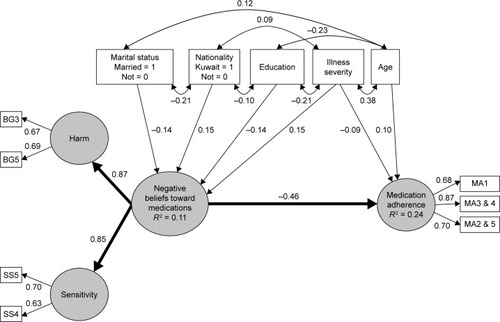Figures & data
Figure 1 The theorized model of the relationships between beliefs about medications and medication adherence, controlling for patient background variables; hypothesized correlations are omitted from the figure for simplicity.

Table 1 Descriptive statistics for the scales used, alpha reliability coefficients, and Cronbach’s alpha when items were deleted
Table 2 Standardized item ladings from exploratory (principal component) factor analysis resulting in six-factor solution
Figure 2 Structural equation model of adherence as a function of negative beliefs toward medications and background variables.
Abbreviations: BG, belief-general; SS, sensitive soma; MA, medication adherence; RMSEA, root mean square error of approximation; CFI, comparative fit index; SRMR, standardized root mean square residual.

Table 3 Demographic characteristics (N = 783)
Table 4 Self-reported disease conditions and number of medications (N = 783)
